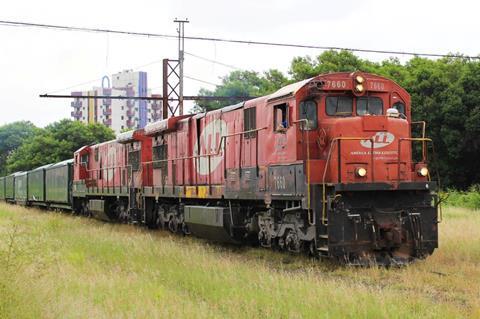
BRAZIL: The São Paulo state government has drawn up a Strategic Railway Plan which aims to revitalise much of the network of underused or moribund lines that have been left to decay in many parts of the state.
The plan has been developed by the Logistics & Transport Department which has set up a working party to progress the proposals. A bill setting out details has been presented to the state legislative assembly.
Key to the plan is the ability to offer concessions to the private sector for operation of railway infrastructure and services. In many respects this mirrors recent federal legislation which aims to promote construction of new lines or revival of abandoned routes. In São Paulo the North American short line model is seen as a viable option for many routes.
Around 2 500 km of São Paulo state’s 5 700 km of railway is either abandoned or barely used, leaving what State Secretary of Logistics & Transport João Octaviano Machado Neto describes as ‘urban scars’ in cities across the state. Revival of these routes is expected to reduce transport costs and improve industrial and agricultural competitiveness, helping to balance the freight transport matrix through the elimination of logistical bottlenecks ― rail is now increasingly seen as a sustainable alternative to the congested road network.
An integral part of the Strategic Plan is the state’s Passenger Transport & Cargo Logistics Action Plan for the Macrometropolis of São Paulo. This envisages R$70bn of private sector investment, R$54∙2bn of which would be destined for rail networks in the metropolitan regions of São Paulo, Campinas, Sorocaba, Baixada Santista and São José dos Campos. Together these networks handle around 70% of rail freight movements in the state.
Five major projects for completion by 2040 are included in the Action Plan:
- construction of the long-standing Ferroanel project that would complete a ring route round São Paulo, allowing heavy freight trains to avoid the congested central suburban area; this involves building a 66 km segment between Campo Limpo Paulista in the north and Eng Manoel Feio in the northeast and a 55 km southern segment between Rio Grande da Serra in the southeast and Evangelista de Souza in the south.
- development of express freight routes.
- duplication of the western section of the Rodoanel beltway.
- development of the multimodal ‘Green Line’ zero carbon corridor between the São Paulo plateau and the port of Santos to supplement existing rail links and the Anchieta highway.
- the launch of inter-city rail passenger services linking São Paulo, Campinas, Sorocaba, Santos and São José dos Campos.
In a separate development, São Paulo State Governor Rodrigo Garcia signed agreements on April 18 with the municipalities of Campinas, Franco da Rocha, Louveira, Francisco Morato, Várzea Paulista and Vinhedo providing legal, financial and technical guarantees for the first stage of the inter-city project.

















